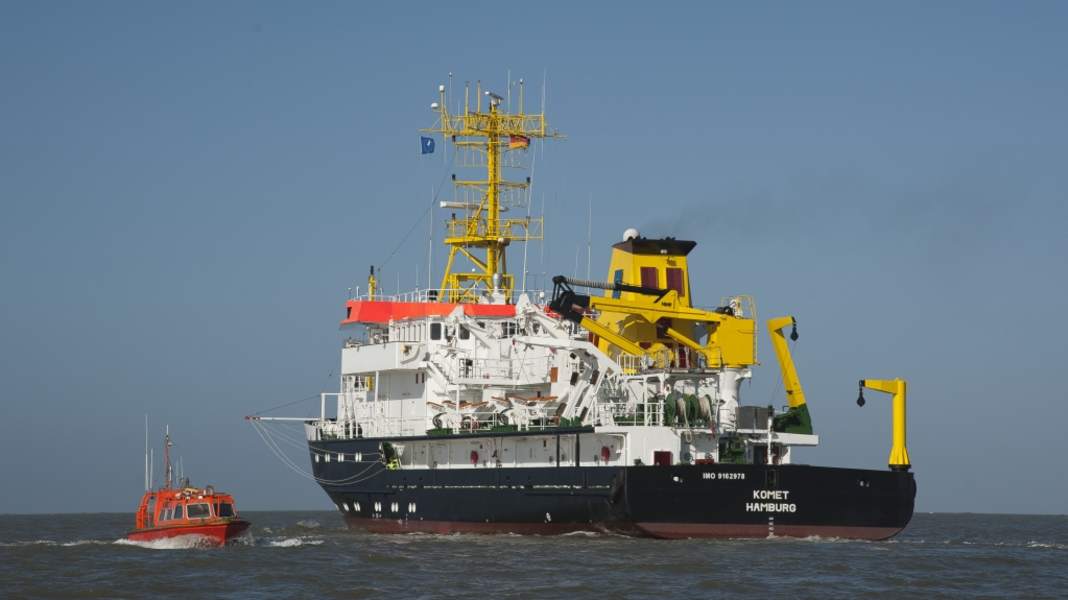Sustainability at sea: "Komet" has been carrying out surveying work for 25 years
Boote Redaktion
· 06.12.2023

To mark the anniversary of the surveying ship, BSH President Helge Heegewaldt emphasises the importance of surveying for the use and protection of the oceans. "Survey data is the basis of nautical charts. They make shipping safe. Thanks to them, positions where oceanographic data is collected can be precisely localised. This makes it possible for us to collect the same data at the same positions over the years in order to track developments in the state of the oceans and take countermeasures if necessary. Surveying data is the basis for maritime spatial planning and therefore also for the positioning of areas for the expansion of offshore wind energy, for example". Heegewaldt thanks the crew members for their outstanding work. "You have travelled a total of 332,000 nautical miles with the "Komet" and its four survey boats. That means you have travelled around the Earth's equator 15 times. That gives an impression of your surveying work!"
"Komet" can stay at sea for 21 days
The 64.20 metre long and 12.50 metre wide "Komet" has space for 18 crew members and six scientists. The operational radius is 5400 nautical miles. It can remain at sea for up to 21 days.
For the surveying work, the ship is equipped with appropriate technology such as survey plumb bobs, precise satellite positioning and an inertial measuring unit for precise data acquisition. Four shallow-draft survey boats complete the equipment. They are equipped with echo sounders and data acquisition systems so that they can work independently in shallow waters such as the Wadden Sea. If required, one of the boats can be equipped with a side-scan sonar for investigating underwater obstacles.
On the road with sustainable fuels
The BSH operates the "Komet" with synthetic gas-to-liquid (GtL) fuel, which is sulphur-free. This achieves better exhaust emission values than conventional diesel fuels. The hull of the ship is ice-strengthened and classified as ice class "E". It can therefore be used up to an ice thickness of 0.15 metres.
Today's Lürssen-Kröger shipyard in Schacht-Audorf built the survey vessel. After the keel was laid on 12 September 1997, the ship was launched on 12 March 1998 and put into service on 4 December 1998 as the most modern survey vessel in the world at the time.
Five BSH survey, wreck search and research vessels (VWFS) operate in the North Sea and Baltic Sea EEZs. The BSH uses the VWFS "Atair", "Deneb" and "Wega" not only for surveying and wreck searching, but also for tests to further improve ship safety, for measurements in offshore wind farms and for chemical and physical monitoring. The "Komet" and "Capella" are used exclusively for surveying. The "Komet" is the second largest ship in the BSH fleet after the VWFS "Atair".
